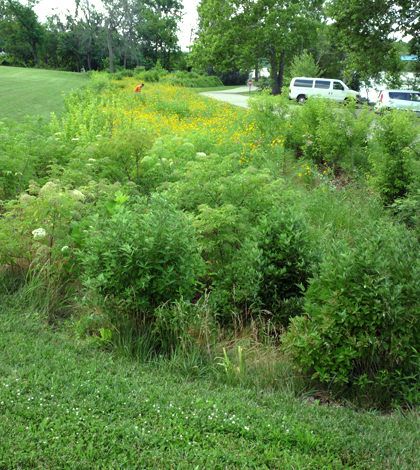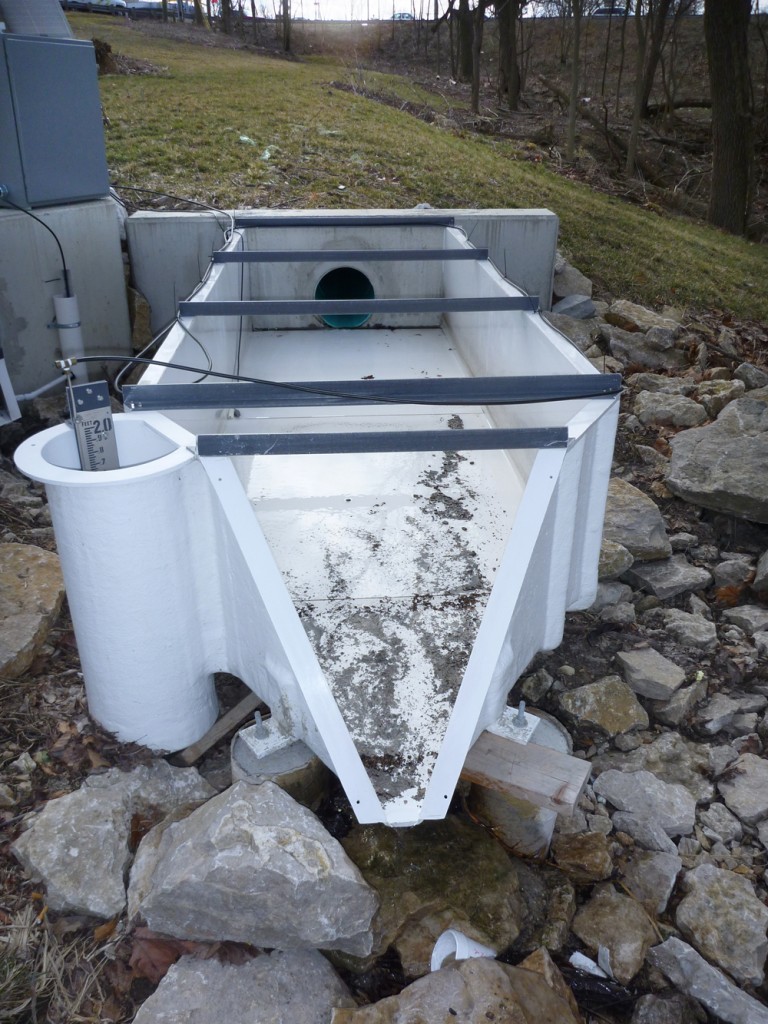Study shows Ohio rain gardens curbing combined sewer overflow issues

Griggs Reservoir rain garden (Credit: Rob Darner)
Of all the different types of green infrastructure projects, rain gardens are probably the most common. They can be installed in a day and their impacts in cleaning and reducing runoff can be immediate. U.S. Geological Survey researchers in Ohio confirmed as much in a recent study that considered plots in Columbus and Cincinnati.
They used H-flume bubblers, a common device for measuring runoff and flow, and data loggers to track water’s movement through the two gardens. At both sites, one near Griggs Reservoir and the other by an apartment complex in Cincinnati, scientists found the amount of water exiting the gardens was less than that going in.
“Rain gardens work in that they reduce the amount of flow going into the combined sewer,” said Rob Darner, hydrologist at the USGS.
That was a key finding because Darner and co-investigator Denise Dumouchelle had been tasked by the Cincinnati Metropolitan Sewer District with verifying CSO-reduction potential of the garden there. In Columbus, the U.S. EPA supported their investigation to make sure reduced runoff was making it into Griggs Reservoir, a drinking water source.
Both rain gardens met criteria for treating water quality: to mitigate the flow caused by a three-quarter inch rainfall event. But Darner says their designs could be improved.
By using different types of pipes, rain gardens can be made to treat more water, says Darner. Also, it’s best when water routinely ponds on top of the gardens, allowing plenty of time for runoff to slowly “percolate” through the garden. This is accomplished through the right mix of soils, which varies depending on the location of a garden.

The study used an H-flume bubbler to measure flow (Credit: Rob Darner)
Instead of making those design changes, Darner says those planning rain gardens may have a different goal: Make them last longer. “The problem with green infrastructure is it eventually filling in,” said Darner. “If the ultimate goal is that the rain garden last longer, in the long run it (designing it that way) might be better off.”
It’s too soon to tell for sure. “We only have a few years of data, and we might not see that type of aging occur for five to 10 years,” said Darner. But he has developed animations of the two rain garden sites to show changes they’ve already experienced.
“We want to find out if the rain gardens are changing over time or not changing over time,” said Darner. He and Dumouchelle have funding to continue collecting data through at least the end of 2014.
Top image: Griggs Reservoir rain garden (Credit: Rob Darner)




0 comments